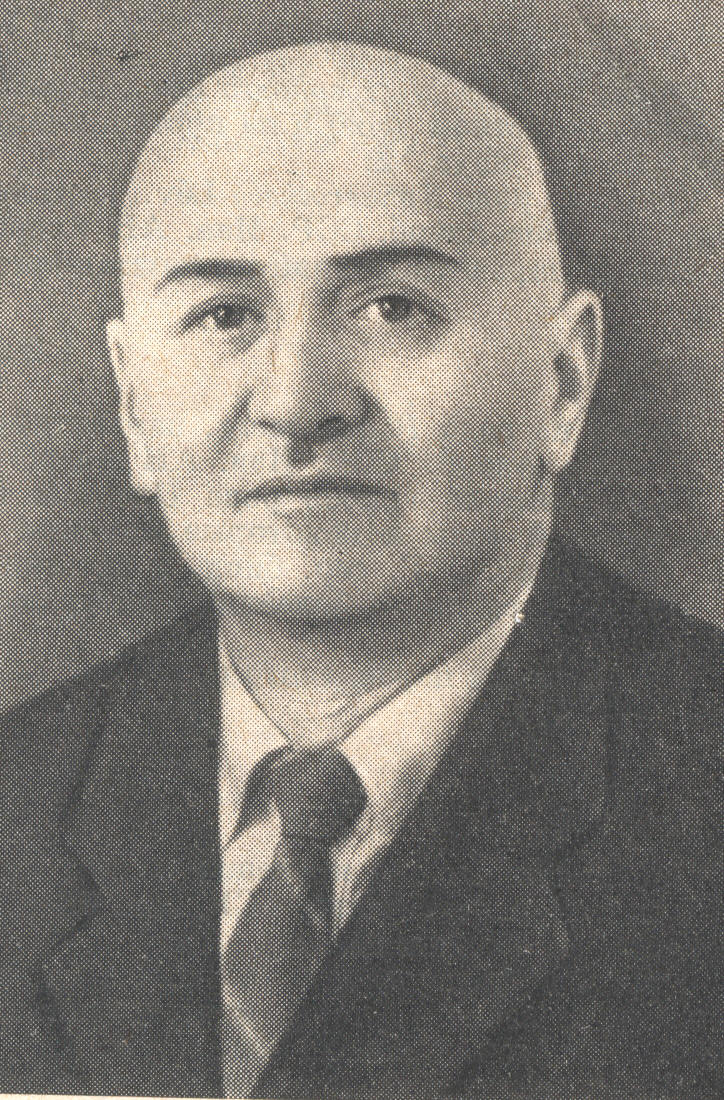
Salman Abutalyb ogly Dzhafarov was born in Baku, Azerbaidjan, in September 1907 in the family of a farrier. In 1926 he entered the Natural Sciences Department of the Teachers' Training Faculty of Azerbaidjan State University. While there, the Natural Sciences Department was re-organized as the Biology Faculty, where he finished his studies in 1930. After graduating, he worked for two years worked as a junior member of the teaching staff at the Higher Teachers' Training Institute then, in 1932, he started his postgraduate study at the Scientific Research Institute of Botany of the M.V. Lomonosov Moscow State University.
His candidate degree thesis surveyed fungi pathogenic on cultivated plants of the Lenkoran area, the southern part of Azerbaidjan, with a subtropical climate and corresponding vegetation. He carried out his research under the supervision of Prof. L.I. Kursanov. After finishing postgraduate study in 1936, he was appointed lecturer at the Chair of Lower Plant Systematics & Microbiology of Azerbaidjan University, and from 1938 onwards headed this Chair. From 1939 to 1944 he was at the same time deputy dean and the dean of the Biological Faculty of the University. In 1942 he defended his candidate degree thesis Diseases of Cultivated Plants of the Lenkoran Area. This area belongs in the Talysh region of Azerbaidjan, and is unique in terms of its location (on the border with Iran) and its soil and climatic conditions (on the coast of the Caspian Sea). The Talysh mountains are home to many relict and endemic plants. Before Dzhafarov's investigations, the region's fungi were completely unstudied.
Beginning with fungal collections from the Talysh region, Dzhafarov's mycological studies eventually covered the whole of the Lenkoran area. After 1951, he began more intensive study of fungi of the natural vegetation of Talysh, when he was appointed as a senior scientist at the Institute of Botany, Academy of Sciences of Azerbaidjan. He organized several expeditions to particularly difficult parts of the region, paying special attention to fungi of relict tree species of the Talysh, in particular relicts of the tertiary period such as the oak (Quercus castanifolia), and the box (Buxus hyrcana). In addition to work on the fungi of these two species, Dzhafarov collected, processed and published material on fungi of the oriental beech (Fagus orientalis), the lignum vitae (Parrotia persica), and the vine (Vitis sylvestris) from woodlands of the Talysh. He also studied plant pathogenic fungi of different cultivated plants of the Talysh. During these investigations of fungi of natural and cultivated vegetation, Dzhafarov took special interest in certain defined micro- and macrofungi, as well as to the ecological groups in which they belonged. Some of his publications were dedicated to wood-attacking fungi of the Polyporaceae, in particular, representatives of the genus Ganoderma, which developed on relict woody species of the Talysh. He also paid special attention to representatives of the order Erysiphales (the genera Microsphaera, Phyllactinia, Podosphaera, Sphaerotheca and Uncinula), collecting species of Microsphaera and Phyllactinia on the relicts of the mesophyll flora of Talysh tertiary woodlands. He also recorded the species composition of Peronosporales on crops growing in the region.
S.A. Dzhafarov planned to summarize all his material on fungi of the Talysh region in a monograph and dedicated the last years of his life to preparing it. Unfortunately, a premature death prevented him from finishing this task.
Kirk & Ansell form of name: Dzhaf.